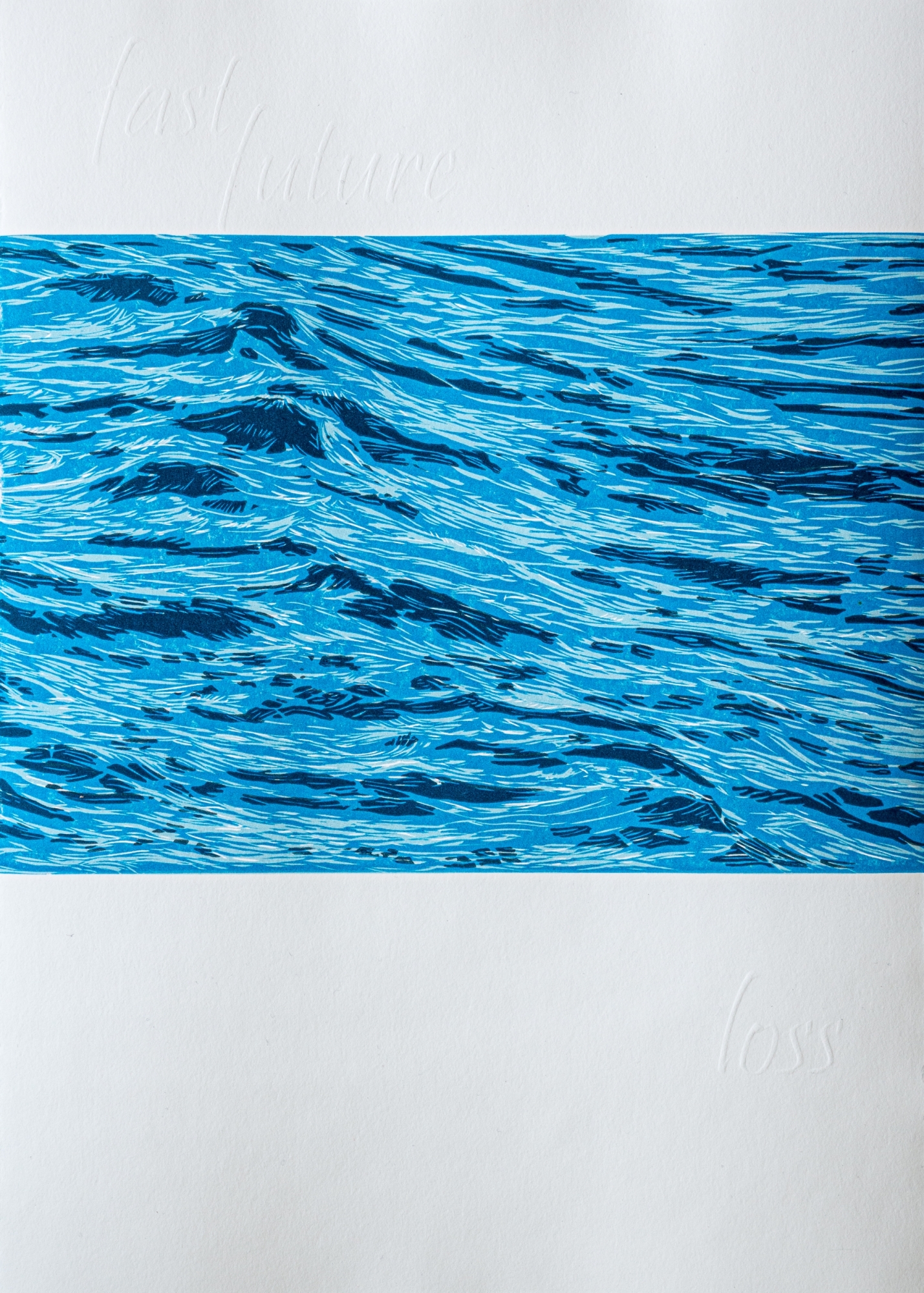Shealagh Pope
Shealagh Pope
Shealagh Pope was born in Montreal, Canada and now lives in Ottawa, Canada. She studied design, ecology, and conservation biology at Carleton University and printmaking at the Ottawa School of Art. She worked as an analyst on issues ranging from science policy, to social innovation and climate change. The seven years she spent working on Arctic science issues fueled her passion for using art to communicate the vast changes that the North is experiencing at the front lines of global warming. Since 2018, she has focused on printmaking. Her prints have been exhibited in Japan, Australia, USA, and Canada.
My work focuses on the environment under climate change and, in particular, the Canadian Arctic. I use a variety of print processes to make the science of climate change visually compelling. Research and analysis inform my practice. Scientific findings or data, such as graphs, charts, or maps, are often layered into my artworks.
The print, Arctic sea ice, 2035, depicts what the North Pole will look like by summer 2035.
In 2020, scientists from the British Antarctic Survey published a paper entitled "Sea-ice-free Arctic during the last Interglacial supports fast future loss". The researchers explored how sea-ice loss might have contributed to global warming during the last interglacial period (130,000–116,000 years ago). Then they updated current climate modelling based on those historical patterns. The revised models projected that the summer sea ice that blankets the Arctic Ocean and plays a crucial role in cooling the planet will disappear by 2035.
The phrase "fast future loss" in the title of the scientific article seemed like some kind of twisted haiku. Although I felt strongly that "fast future loss" needed to be included on the print, I choose to emboss the text so it is only minimally visible. Unless you focus on them, the words disappear. Like the sea ice.








































